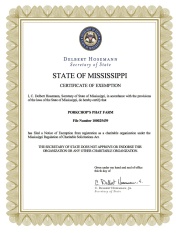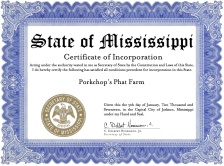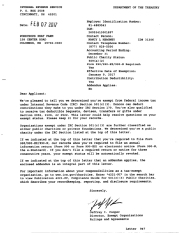Piggy Care Guide
Before diving into the care of your piglet I feel there are a few very important things to ALWAYS keep in mind, they will be repeated in this guide but if you don’t take anything from this guide except these few pointers, you will do okay.
- When you first get a piglet almost always they are shy, the reason is they are a prey animal, they need to know that you are not the predator, they need to build confidence in you and its new surroundings.
- Never, ever put a pig down or give into a pig when they are squealing, you will have a squealer for life!
- A pig is always hungry, no matter the size, big, farm hog, mini, they are pigs and they are always hungry, don’t give in!
- Pigs are stubborn, you have to be the BOSS!
- Pigs in the wild are PREY, their instinct is to run and hide. They have no clue if you are there to make them secure or to hunt them, the first few days of pig ownership are never the best.
- Traveling is stressful for piglets until they are use to it, you may experience some diarrhea, its ok to treat with Imodium, ¼ tsp, 4 times a day until stopped. If it doesn’t start to stop within 2 days or it changes to a watery consistency consider seeing a vet, ecoli is in every bodies intestines and when the immune system it takes the opportunity to take over and needs antibiotics. This rarely happens but please be watchful.
- Pigs do not need constant snacks and are active creatures naturally, they love to roam, root and play. I see a lot of obese pigs and the difference seems to be families that constantly are feeding them human foods, table scraps and snacks and keep them caged up. I tend to feed my pigs more than most but they consider their veggies and occasional fruits snacks. During the bonding process snacks help to speed the process up but then it’s time to put them away and let your pig be a pig. A thin pig or an obese pig is an unhealthy pig, an average, healthy weighted pig is the happiest pig.
- The more time you put into your pig, the better your pig will be. An ignored, bored pig is naughty. A well loved pig with entertainment, family time, activity and outdoor time is a well behaved piglet.
- Transitions are tough for pigs. Sometimes they don’t eat for 24 hours, never offer dog food to entice them to eat, they will eat it and its toxic to pigs, the sodium levels are too high. You will want to be concerned with water consumption, pigs dehydrate quickly and will die from it quickly. Their internal sodium content is high and without hydration they get salt toxicity. Its best to keep your pig hydrated and let them eat at their pace the food provided.
As a courtesy to my customers I have wrote up this sheet, although it applies in general to most piglets, they too are individuals and you might have to change up a few things to make it work for you and your piggy.
Before your piggy comes home…..Set up a small area, a playpen or doggy play yard is perfect, for your piglet. In this area have a soft blanket to snuggle in and fresh water. Make sure there isn’t any drafts, if your piggy is on a porch where he/she is going to be getting chilly, a heating pad or heat source would be appreciated by your piggy, they love 80-90 degrees! Piggies do not like to potty in their beds so I put a litter box filled with pine pellets (not cat litter) and they use it. Spray your pellets with a squirt bottle to fluff up the litter, this will help to keep your piglet from eating the pellets and causing a blockage.
I set up a day to day guide on adjusting your piglet, but find that most piglets adjust more quickly because they have been socialized, but if your piglet spent a lot of time in a crate during transport, start slowly it’s quite stressful for them.
What to expect the first day…..A timid piggy. Your piglet has just left it’s herd, it’s family and everything it has become to know as normal. Imagine if you were dropped by airplane in a foreign country without a companion, to start all over, scary isn’t it. The first thing you need to do is introduce your piggy to it’s “new space” Place it in a small holding area with fresh food and water and observe. Your piggy needs time to adjust, let him/her explore their area before you start to interact with him/her. Kids and other pets may be very excited, you don’t want to cause your new piglet more stress and anxiety, so a place away from all the commotion might be best the first day, it really depends on the dogs and kids and the pig. If a dog is easily excitable it will make your transition time longer and scarier for the pig. If there is time in the day pick up your piggy after they have explored their new home and hold him/her. They are not going to like it one bit! You are new to them. In the wild the only time a pig has his/her feet off the ground is when they are being eaten, so instinct says they don’t like to be picked up. You can change this but it takes time. Offer a treat and under no circumstance let the piggy free in your yard or home, you will spend the next 2 hours chasing it, making it frightened.
What to expect your second day…..It’s time to get to know your piggy better. Go ahead and sit next to your piggy and talk to him/her, offer your piggy small pieces of food out of your hand, your piggy may or may not take it at this point, but the fastest way to a piggy’s heart is through it’s stomach LOL. Just remember after your transition period make your snacks healthy (veggies, pig salad and occasional fruits) If you are ready to hold your piglet, go for it. I scoop them up in my hands, it makes them feel more secure, but expect SQUEALING when you pick up your piggy, some get over that and some don’t. When I hold a piglet I hold it secure and support the feed so they feel like they have ground under them. I never put a piglet down if they are squealing, you are giving them “their way” and it’s a bad habit to start. Once they are older you won’t be picking them up much, but it is a good idea to make sure they are use to being handled, makes health care easier.
What to expect your third day….Let your piggy start to roam small amounts of time and just short distances away from his/her space and always supervised. and let them get use to the new home, and now you might be able to introduce a pet or two slowly. My pigs are use to dogs and cats, they are even use to a hyper Chihuahua and generally ignore her or play with her. But a new pet may be different. Keep offering small food morsels out of your hand, then put them in your lap until your piggy is comfortable crawling up in your lap. Once your piggy is comfortable start to slowly (did I mention slowly) start offering scratches on the sides, belly, etc…..this is how you will bond with your piggy.
Day 4 and on….each day spend time with your piggy, building trust and bonding. Before long, you will notice your little piggy following you everywhere you go, resting with you while watching movies and taking walks. Remember, time with your piggy is good, too much time and catering too, will be a spoiled piggy. So be careful not to spoil your piggy, you have the next 18 years with your new companion.
General steps for socializing your piggy! All pigs are different and it’s absolutely TRUE, pigs are individuals and they will all socialize differently some pigs might be ready to be a part of your family the first day, so use common sense and be courteous to your pigs’ feelings.
What do I feed my piggy?....We are shooting for 12-16% protein in our feeding program, which is perfect for my mini pigs (except when they are on mamas milk), it promotes slow steady growth and keeps them lean and active. As we research proper piglet feeding, our own personal feeding program has evolved, we use to feed Purina Pig and Sow food (green bag 16%) or Mazuri Mini pig ELDER feed, along with about another 1 cup of fresh veggies (romaine lettuce, broccoli, cauliflour, celery, cucumber or any other veggie besides iceberg lettuce, avacados or tomatoes. In the morning or sometime during the day you can supplement a small slice of fruit (apple, persimmons, a few raisins, etc). I usually don’t start fruits until your piglet has readily accepted veggies.
Start with ¼ HEAPING cup twice a day along with veggies, I leave fruit out for 5-6 months. You will increase or add another ¼ cup meal when your piglets belly doesn’t fill up, work yourself up to 1 cup, twice a day by the time they reach 2 years old. If you want to use a mini pig, Mazuri mini pig food is the “gold standard” of mini pig food, it contains all the vitamins, minerals and nutrients a healthy piggy needs.
When I use a mini pig commercially prepared feed, I feed according to Mazuri labels. But I only buy Mazuri ELDER feed, I skip the youth and the adult because the protein in these two bags
exceeds the needs of these piglets and is more suited towards big American farm hogs (I personally have read the labels it looks identical to me, just in a different bag). So my adult pigs get
a heaping 1 cup in the morning, 1 cup(heaping, not level) at night, with veggies each night, such as lettuce leaves, carrots, even a small piece of fruit. I feed according to Mazuri’s
manufacturer directions on the bag. 2-2.5% of your pigs’ weight, I personally feed more without any added weight gain, my goal is always a healthy pig first and foremost. If you piggy is
getting too fat cut back, if they look too thin add a bit. You can tell your piggy is full by his/her little tummy getting round after a meal, you don’t want your piggy too full as it will lead to
obesity and they do throw up if they gorge themselves. However when your piggy is going through a growth spurt that round tummy may not be as apparent, as long as they are eating all their food you
are good. Many people wet their pig food, I do not, but if your pig is eating and rushing to the water bowl, you can try wetting it because it’s probably too dry for your pig. I like to put a
small amount of coconut oil over one meal a day, its healthy for the inside and the outside. The other thing I do is once a week I always pick Saturday mornings, I squeeze an Omega 3 capsule
over their food . If you have an indoor piggy, you can give a childrens chewable vitamin with iron, if your piggy goes out and plays in the dirt, they get all the iron they need from the soil.
As treats I keep a bag of Cheerios in the car and a box of raisins. If you use raisins, only 1 or 2 at a time.
IMPORTANT! If you buy a whole bag of mini pig food (25 or 50 pounds) you MUST break it up into 1 gallon zip lock bags and freeze everything except one bag at a time. The bags tend to grow mold (even if not moist) and if eaten by a piglet has the ability to KILL them, it’s causes C-Diff a very deadly disease and it’s really hard and costly to save them. So please follow this guideline.
NOTE ABOUT NEUTERED AND SPAYED PIGGIES! Just like when you alter your dogs, pigs too tend to decrease their activity and metabolism, you have to decrease you feed to compensate. If you don’t want to decrease volume (because pigs love to eat), decrease your pellets and increase your veggies, but watch your piggies weight. We do not want underfed pigs. But we don’t want porky pigs. I am always here for support, just ask.
Potty training your piggy….When you start to potty train, you need to take your piggy outside or the potty area every two hours. When they do their “business,” use lots and lots of positive reinforcement and treats. Never harshly scold or spank your pig. When they have an accident, immediately take them to the appropriate area. It’s just like training a puppy but much quicker. If you are teaching them to go outdoors, they usually train in a day or two and before you know it they go to the door to ask to use the bathroom, they prefer to go outside. Indoors generally takes about 3-4 days in my experience. When they have slip ups, you want to make sure they aren’t drinking excessive water, pigs do this out of boredom and put them back into a small area with a litter pan and bed, until they get “it”
Your piggy’s health care…..If you chose to vaccinate, most feed stores carry the vaccinations. They also carry many wormers, you can chose to inject a wormer like Ivomectrin or put the wormer in their food, it’s really a personal preference. Another method is to take a small piece of bread, measure out your Ivomectrin and put it on the bread then feed it to your piglet, we have done this with great success, checking with a fecal test for worms and have not had any, so it is very effective. If you piggy plays outside on concrete you may never need to trim his feet, if you do trim them start small and never trim between the toes. If your piggies ears get dirty you can clean them with a damp washcloth, we rarely clean ears unless you can really tell they are dirty. Never go into the canal, only were your finger can reach and never with q-tips or any other device. If cared for property, fed property and given a warm place to sleep you will have a very healthy piggy that rarely needs to see a vet. I noticed that sometimes my pigs get allergies in the spring and their eyes get goopy, you can get eye ointment at a feed store for a few dollars, almost any of them work. Minor scratches and scrapes heal quickly on their own, if you have a deeper cut you can use a triple antibiotic ointment. Never use Hydrogen Peroxide because it does kill the live skin tissue and decreases healing time. As you can see, handling your pig will come in handy during health care time. Keep this in mind when socializing them. Handle their feed, touch their eyes, feel their ears, etc….make sure that when you need to handle them it’s not new.
Regular care….
Vaccinations….when your piglet leaves here they are not vaccinated for a few reasons. The most obvious reason is that they are too young, most vets don’t recommend starting vaccinations until your pig is at least 8 weeks. Also note that when your piglet goes to a vet to get vaccinations most likely your piglet will be getting the same amount and same type as farm hogs, meaning a large amount, expect a fever and lethargy. I only do tetanus and regular worming. But want you to note that at the time you take home your piglet it will have NO vaccinations.
Neuter site….note when piglets are neutered the incision area is left open for drainage. Most of the time this site is completely healed before taking your piglet home, but you may see your piglet scooting its behind because the area is healing, its not worms ( your piglet is wormed), if the area is not completely sealed a full bath cannot be done, I will let you know if this is the case.
Ear care…..don’t insert qtips into your pigs ears, if you can’t reach it with a damp wash cloth on your fingertip, I doesn’t need to be removed and can actually harm your pigs ears.
Eye care….normal discharge is fine, but if your piglets eyes get dust or something stuck in it, you can rinse with a saline solution and use old fashioned Neosporin (no pain killers) to help avoid and infection and help dislodge any particles. Keeping your piglet at a healthy weight will keep your pigs eyes healthy.
Dry skin….we like to use Extra Virgin Coconut Oil or second best is Aveeno, fragrance free lotion as needed.
Hoof Care….Pigs need routine hoof care or need the ability to wear their hooves down naturally like in nature. If you have been to my farm you may have noticed that my pig pen is half pavers, this is the area where I feed and put their pools so I don’t have routine hoof care. The alternatives are to desensitize your pigs feet early (lots of handling and using a file with positive reinforcement) or plan on taking your pig to the vet twice a year for hoof care, this will mean lots of practice traveling.
Tusk Care….If you bought a neutered male or a female (this is 99.9% of our sales) there is a chance that you may never have a tusk come out of the lip, some do and for those I recommend having your vet trip the tusks, never remove them. They are embedded in the jaw, but trimming if needed is advised.
Bathing…some breeders bath alot! I don’t only if/when needed. Pigs tend to have dry skin, bathing dries them out even more. They don’t get smelly, unless you have a male that is unaltered or get into something smelly. When I do bath I used a tear free shampoo, the water is fairly warm because their body temp is naturally 101 degrees, I put a baby oil in the bath water and right before I take them out I squirt a little on their back and rub it in. Some pigs like to be scrubbed with a soft scrub brush during baths too, it helps to loosen dead skin.
Brushing…you can start this when they are young, it does stimulate the natural oils in the pigs skin and they enjoy it, as well as you will too!
Most of your daily care will be in the bonding and cuddling with your pig. An emotionally happy pig is a healthy pig.
Outdoor time….Pigs need outdoor time. They love to explore, smell things and root. Yes, root. If you have a gorgeous flower garden you might want to keep your piggy out of it, or stay with your pig at all times, they love to turn over rocks, they are so nosey! They need a minimum of 30 minutes a day. On weekends mine get extra time out, they get to go play on the 5 acres all day as long as I am home.
Leash training your pig….I should say harness train, a leash and collar won’t work for these guys. A harness made for a pig is a must, they are all over the internet. Once your pig trusts you and lets you handle him/her you can start to harness train. Here are some simple steps to follow:
- Show your pig the harness, let them see it and rub it on them, let them know its nothing to be feared, done with day 1.
- On day 2, show them the harness and let them know you are going to put it on them. Go ahead and snap it on them and know that they are going to freak out a big. Let them, let them run with it for a few minutes. This will teach them that it will allow them to move freely.
- On day 3, repeat Day 2. You are going to do this until they start to accept the harness, but no more than about 5 minutes each day. Leave the leash attached, they need to know what it feels like.
- When your pig has accepted the harness, it’s time to walk them. Gently guide them, when they go in the right direction reward them, use your words, they are smart and learn quick.
- Never leave your pig tied up with a harness and never leave the harness on your pig. Take it off and reward your pig for a job well done, they will look forward to your walks and know that when you get the harness out, it’s piggy and parent time!
www.piggear.com makes a great harness or Ross Mill Pig Farm, both have fabulous reviews from my customers.
What’s next? This is up to you. Will it be tricks? Sleeping in your bed? Free range of the house? It’s your new pig and family member, you will be able to teach your pig whatever you want. They look to you as their family and they aim to please. Just like the family dog, the more time and effort you put into your pig, the better pet and family member they will be.
Although this is a broad guide, I hope it answers some questions for you and gives you some guidance. I found that on the internet there are many sources, some great, some are too vague to help, but over time you will develop your own methods. Each pig is an individual like you and I. Some methods will work perfectly, some will need to be customized. Patience is the key to a happy piggy and a happy piggy home.
I love to stay in contact with my customers, some have become my closest friends. I enjoy seeing pictures and hearing the stories. I also like to provide you with support when needed. Many clients come up with new methods that I adopt. The more we share and communicate, the better off our pigs are.
Written by Anita Jacobson for
California Mini Pigs, all rights reserved
Reprinted with permission. ©Anita Jacobson, Just Mini Pigs FB Group






